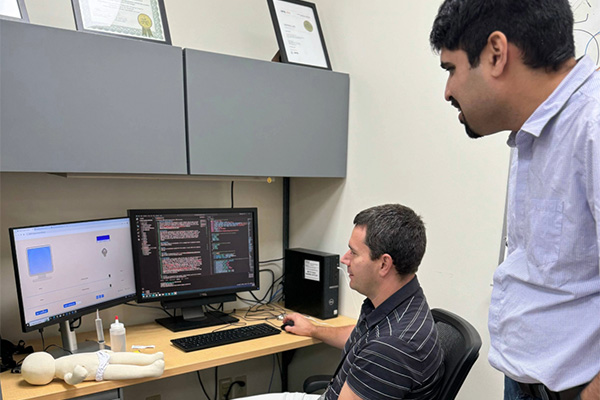Teacher Researchers Partner with WashU Faculty to Ignite Curiosity in Students

By middle school and high school, most students in the U.S. are familiar with the terms MRI and CT scan. Chances are, they know these diagnostic imaging tools are used when physicians need to see parts of the body in a different light.
But do they understand the underlying physics of biomedical imaging? Do they see the mathematics in it?
To Abhinav Jha, associate professor of biomedical engineering and of radiology at WashU, helping students early on understand the physical phenomenon can also stimulate their interest in mathematics.
“They say that mathematics is the language in which the universe is written,” says Jha. “It is very much the language in which a lot of the physical phenomena for imaging is written. If middle and high school kids can see how math and imaging are so linked, they can see math in a different light, too. At the University, I have the privilege of talking to graduate and undergraduate students all the time, but how do you convey the essence of an advanced science concept to a high school student?”
For that, Jha leaned into the expertise of Alex Messina. Messina teaches science at St. Charles High School, and with ten years of teaching experience, he’s been the perfect partner to help Jha develop learning modules that are understandable to this younger audience of learners.
“Knowing where students are going to get hung up can be really hard without having experience,” says Messina. “Inexplicably, they will take something in a direction I’m not expecting. You have to adapt like an improv actor. A lot of my job is asking clarifying questions and level-setting.”
Jha and Messina participated in the Summer 2024 Teacher Researcher Partnership Program. Administered by WashU’s Institute for School Partnership (ISP), the program is designed specifically to provide opportunities for faculty to connect in meaningful ways with educators in the broader community and to provide professional development for K-12 teachers to gain new experiences and skills. The collaboration was a win-win.
For Messina, working with Jha and the graduate students in the Danforth Campus lab was an opportunity to put himself back into the seat of a learner. He developed two educational tools (one computer-based, the other hands-on) that can be used to demonstrate the deeper components of imaging.



